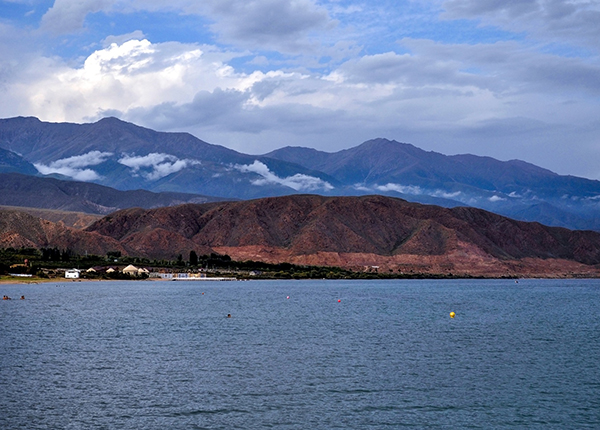KYRGYZSTAN, ASIA
Lake Issyk-Kul
Lake Issyk-Kul lies at an altitude of 1.600 m in the high mountain range of Tien-Shan (the Heaven’s mountains) in the north of Kyrgyzstan covering a surface of 6.236 km². Its length is 180 km and its width 60 km. The lake has an average depth of 270 m; maximum depth is 668 m. Lake Issyk-Kul is Kyrgyzstan’s largest lake. It is after Lake Titicaca in South America world’s second largest high mountain lake.
What makes it special
In contrast to most lakes in Central Asia, lake Issyk-Kul it does not freeze in winter despite the low temperatures. Some few salinity and numerous warm springs at the bottom makes the Issyk-Kul” means, which means “hot lake”.
Protection status
· Ramsar Site 1231, Wetland of International Importance
· UNESCO Biosphere Reserve
· Strict Nature Reserve (IUCN Category I)

Biodiversity
In the Tien-Shan Mountains, about 4.000 different plant species are native, 1.400 of them endemic. Ancient wild orchard species as well as spruce forests that grow on permafrost soil are of great importance. In these spruce forests of the north slopes live Brown Bear, Siberian Roe Deer and Lynx. In the high mountain steppes Steppe Sheep, the rare Marco-Polo-Sheep, Tien-Shan Squirrel and Pika are native. Snow Leopard, Markhor and Ibex prefer higher frosty regions. Birdlife is very rich, Bearded Vulture, Steppe Eagle, Mountain Goose, Saker Falcon, Greater Scoup Duck, Himalayan Snowcock and Black Ferruginous Duck breed here. Among the migrant birds are Black-necked Grebe, Slavonian Grebe, Great White Egret and Grey Heron. Lake Issyk-Kul is a resting place for rare ducks: Northern Pintail, Gardaney Duck, Golden Eye Duck as well as Red-breasted Merganser and Goosander.

Local Communities
Issyk-Kul Region is one of the regions of Kyrgyzstan, which takes its name from Lake Issyk-Kul, which covers about one seventh of the area. Its total area is 43.735 km². The resident population of the region was 501.933 as of January 2021
Threats
The declining water level of the lake since the start of systematic monitoring in 1927, the pollution of the shore waters due to inefficient or lacking wastewater treatment and the input of fertilizers and pesticides from the agricultural areas of the lakeshore plain are the main threats.


